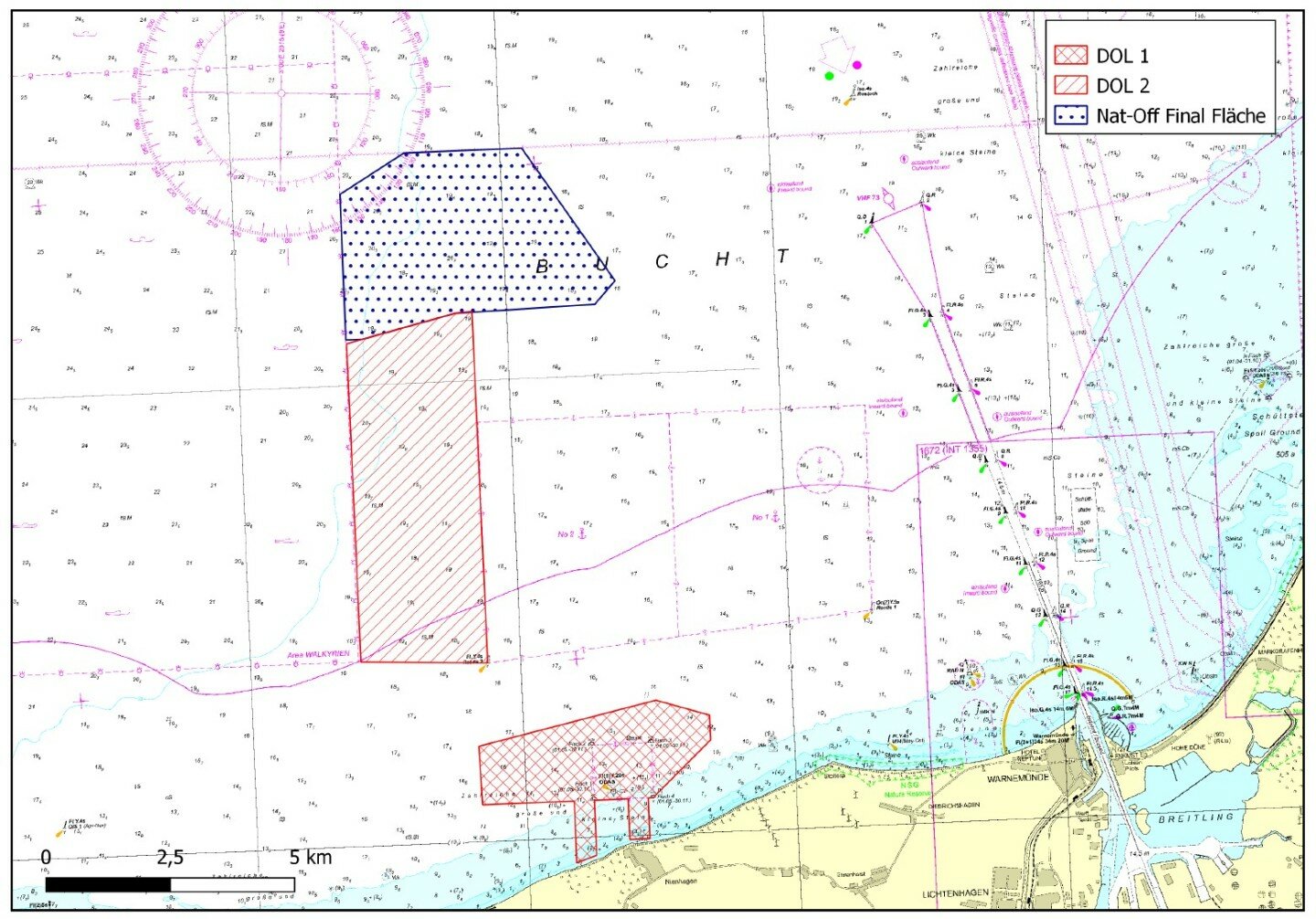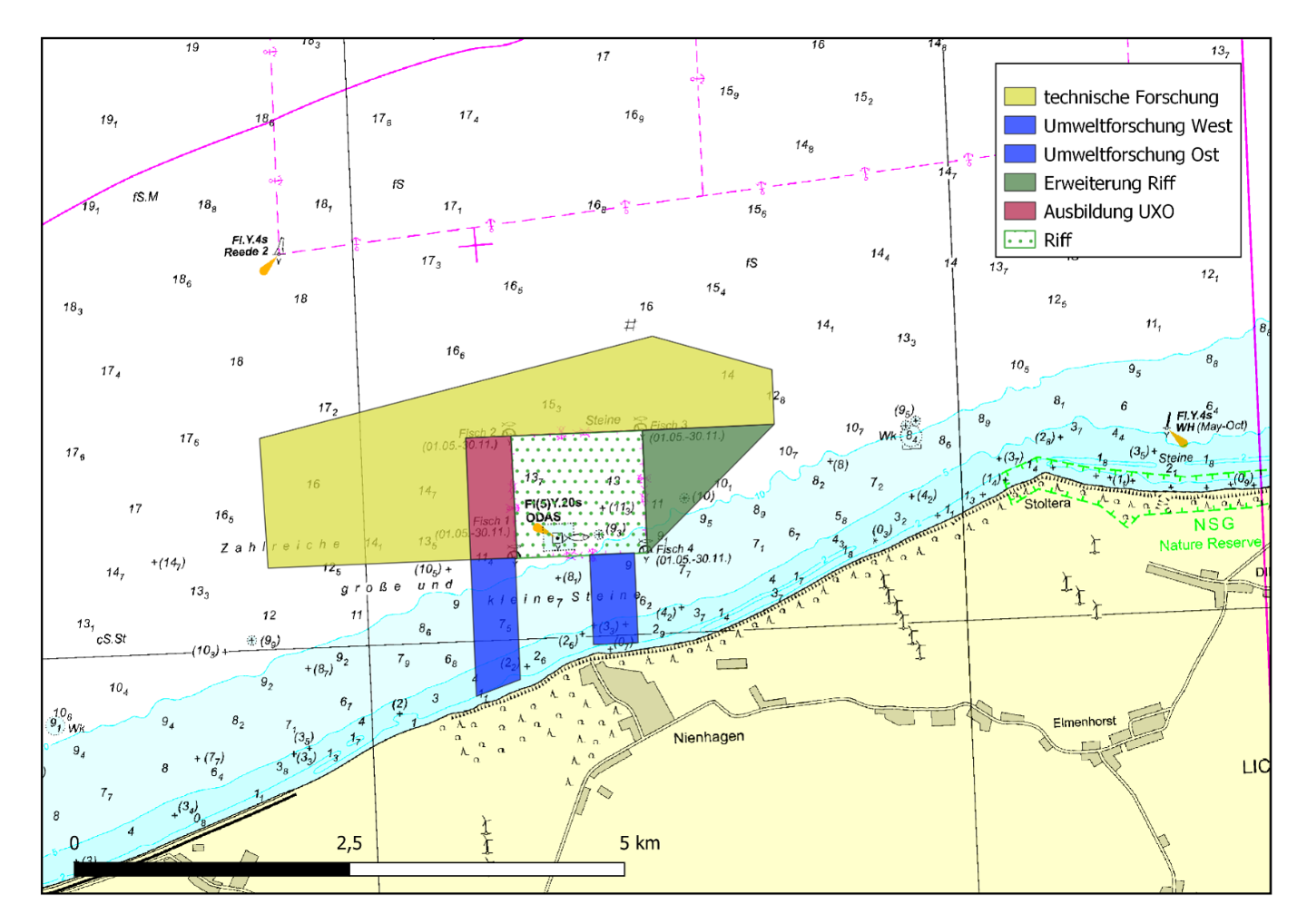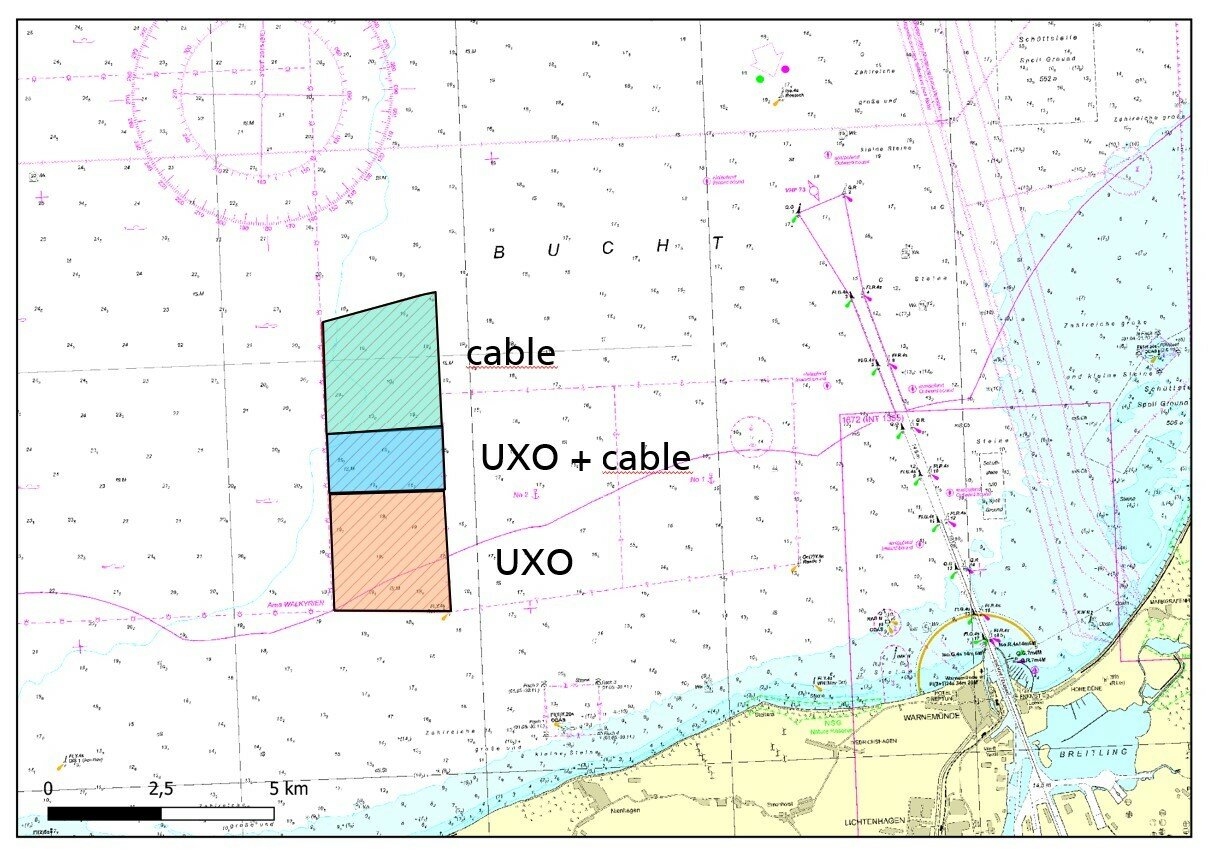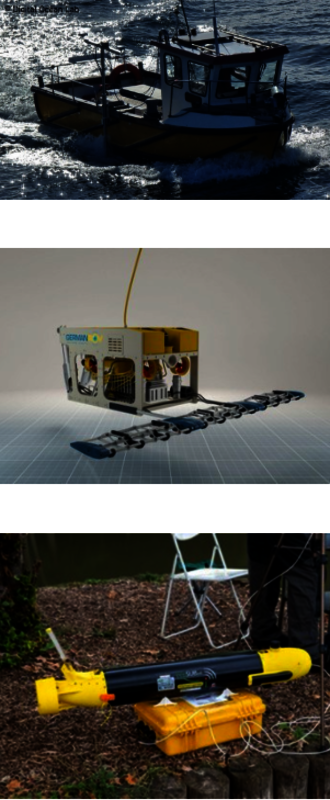Within sight of the beach at Nienhagen near Rostock, a yellow scaffolding rises out of the Baltic Sea. At the foot of this platform, at a depth of more than ten meters, lie hundreds of elements made of natural stone and concrete. Until now, this artificial reef has been used primarily for fisheries research. But now a unique test field for marine technology is being created, only about one and a half kilometers from the shore. Until now, there has been no opportunity anywhere in the world so close to the mainland to try out new underwater technologies. The Digital Ocean Lab, operated by the Fraunhofer Institute for Computer Graphics Research IGD in Rostock, closes this gap. Broadband connection as well as power supply of the underwater test field are ensured by the connection on the platform. Over time, scenarios close to the application will be set up. Sensors can then be used to test how they work and how they affect the environment. So-called underwater gardens will enable further diverse research.
In the artificial reef off the coast of Nienhagen, two test fields are being built for different application purposes, DOL 1 and DOL 2, which is currently being planned.
DOL 1 is particularly recommended for environmental research in (shallow) water: The artificial reef is suitable for monitoring and protection research of the sensitive reef ecosystems. In addition, a large area is available for technical research, where surveying technology can be tested and calibrated and, for example, the effect of waves on structures can be simulated. Furthermore, there is an AUV test and UXO training area in close proximity to the reef.
DOL 2 will be tailored for unexploded ordnance (UXO) detection and provide generous areas for testing underwater cables. A combined test site will allow for expanded testing capabilities under real-world conditions.

The Digital Ocean Lab (DOL) off the coast of Nienhagen.

DOL 1 provides space for reef-related research, reef monitoring, surveying, calibration of technical equipment and much more. Furthermore, it serves as AUV test site as well as UXO training site.

Test sites for cable laying and UXO are located in the planned DOL 2.
Digital Ocean Lab offers a selection of professional equipment:
Technical equipment:
External support:
Spotter buoy to measure:
Maritime monitoring via:
